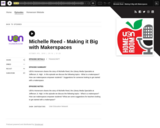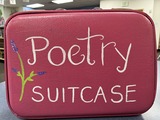Become familiar with how libraries are laid out and call numbers.
- Subject:
- Media and Communications
- Material Type:
- Lesson
- Author:
- Utah Lesson Plans
- Date Added:
- 11/01/2021
Become familiar with how libraries are laid out and call numbers.

Guiding students to choose an appropriate library book. The “I PICK” book method.Allowing students to choose their own books in the school library setting is a very important library best practice. The I PICK the right book method represents a list of steps the students can practice to learn and relearn this skill. This lesson can be used as a first of the year library lesson and retaught throughout the year as a reinforcement for this library skill.
Informational texts in the library. How to use the card catalog to find an informational text.
Students will be introduced to vocabulary used to effectively evaluate print and digital sources.
In the Library Learning Center, students will learn searching strategies to find valid and relevant articles in EBSCO, Gale and Google Scholar.Using the 5 Ws of website evaluation (Who, What, When, Where and Why), students will evaluate 7 websites and complete a Website Evaluation graphic organizer.
The various genres and subgenres are presented to the students using a video and presentation, and use of examples of several fiction, non-fiction, and poetry books. Then, using a mixed-genre set of books, and the notes they took during the presentation, students will identify the genres represented in each set.After students finish reading a book independently, they will use what they learned from the presentation to identify the book's genre in their book reviews for their ELA teacher.
With guidance and support students will explore using various research tools to help them access information about a specific topic. In this lesson we are learning about bears but you could choose another animal or topic as well.
A look at the history of libraries and the difference it makes in the world.
Children will discuss why we have libraries and how we should act in a library.

Word Count: 4373
Included H5P activities: 6
(Note: This resource's metadata has been created automatically by reformatting and/or combining the information that the author initially provided as part of a bulk import process.)
Through an orientation for students, they will understand the basics of the library layout and how to utilize search computers efficiently to find books and information.
This lesson is focused on media violence, especially comparing consequences of actions in real life vs. those portrayed in media (i.e., movies, tv, video games, etc.).

In the new episode, we share the story of Michelle Reed, the Library Media Specialist at Jefferson Jr. High. In this episode we discuss the following topics - What is a makerspace? How can makerspaces empower students? What are some suggestions for teachers looking to get started with a makerspace?

Overview of Noodle Tools from Utah's Online Library

Everything you ever wanted to know but were afraid to ask about library promotions! This site has resources to support librarians in making displays, having a yearlong theme and designing fun promotions for secondary students.
What plagiarism looks like and the rules to avoid it. A note taking strategy to prevent coping directly from the text.
Students will be exposed to two non-fiction books, both telling the same true story. They will make connections, gain knowledge, and learn the history behind a well loved children's character. They will analyze the different perspectives presented by each author. After listening to the story students will answer questions.
Students will watch a short video about the parts of a book and then test their memory to see how much they can remember.
Students will pull information from a research article, write the most important and/or interesting facts on several note cards, and create a visual representation (infographic) of the selected important points of their research.

Students in K-5 enjoy this lesson during their "Library Time" every year during the month of April, which is National Poetry Month.